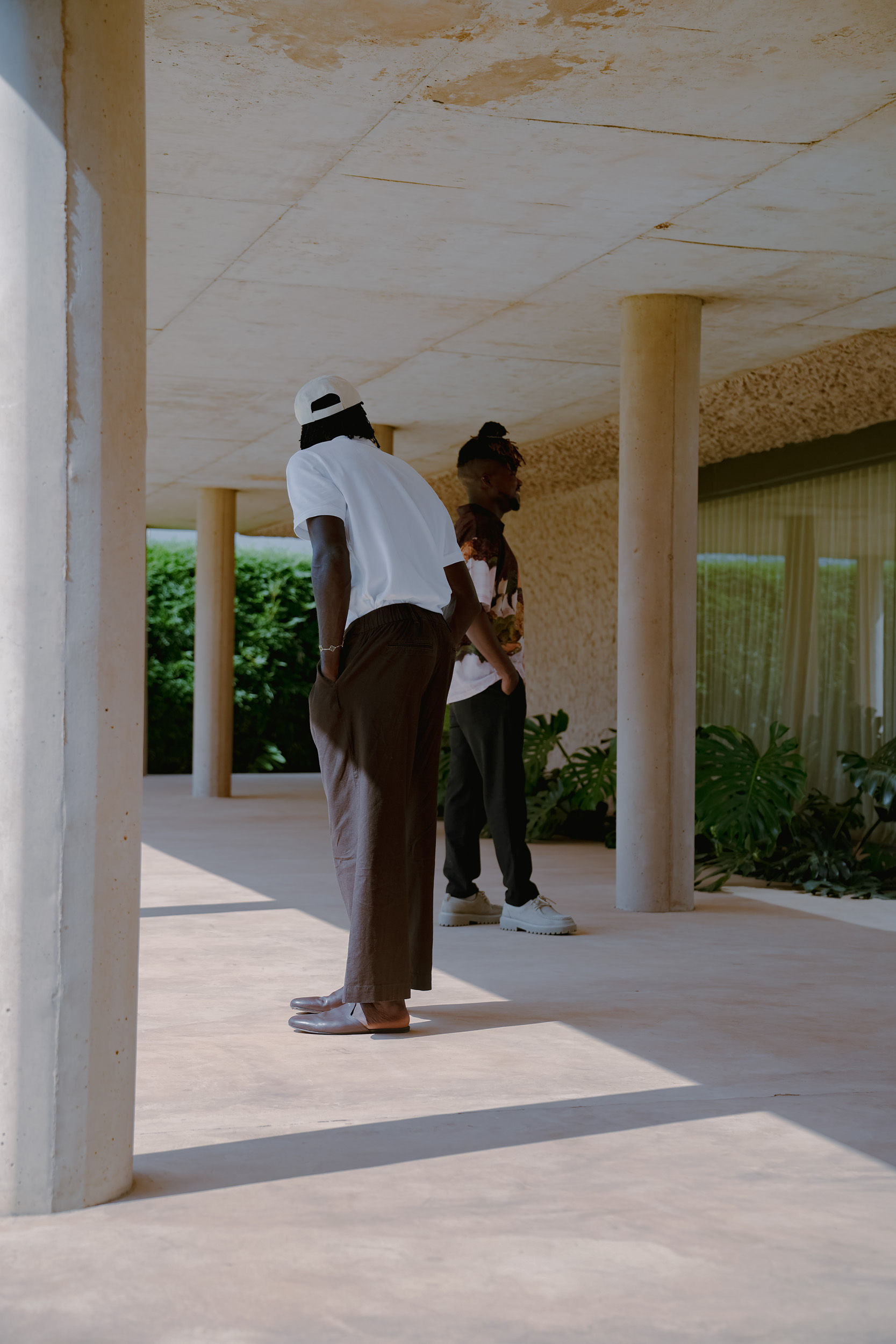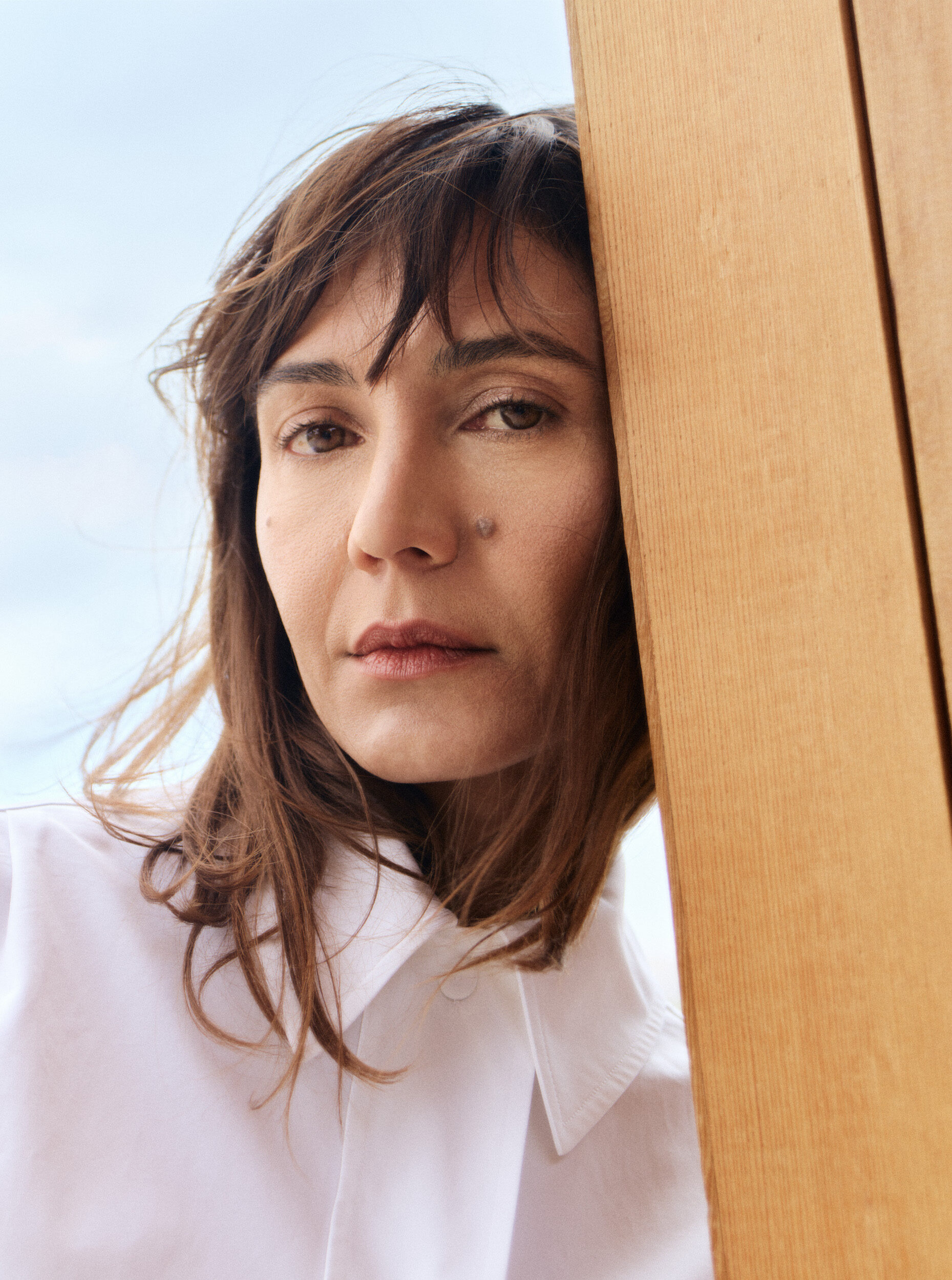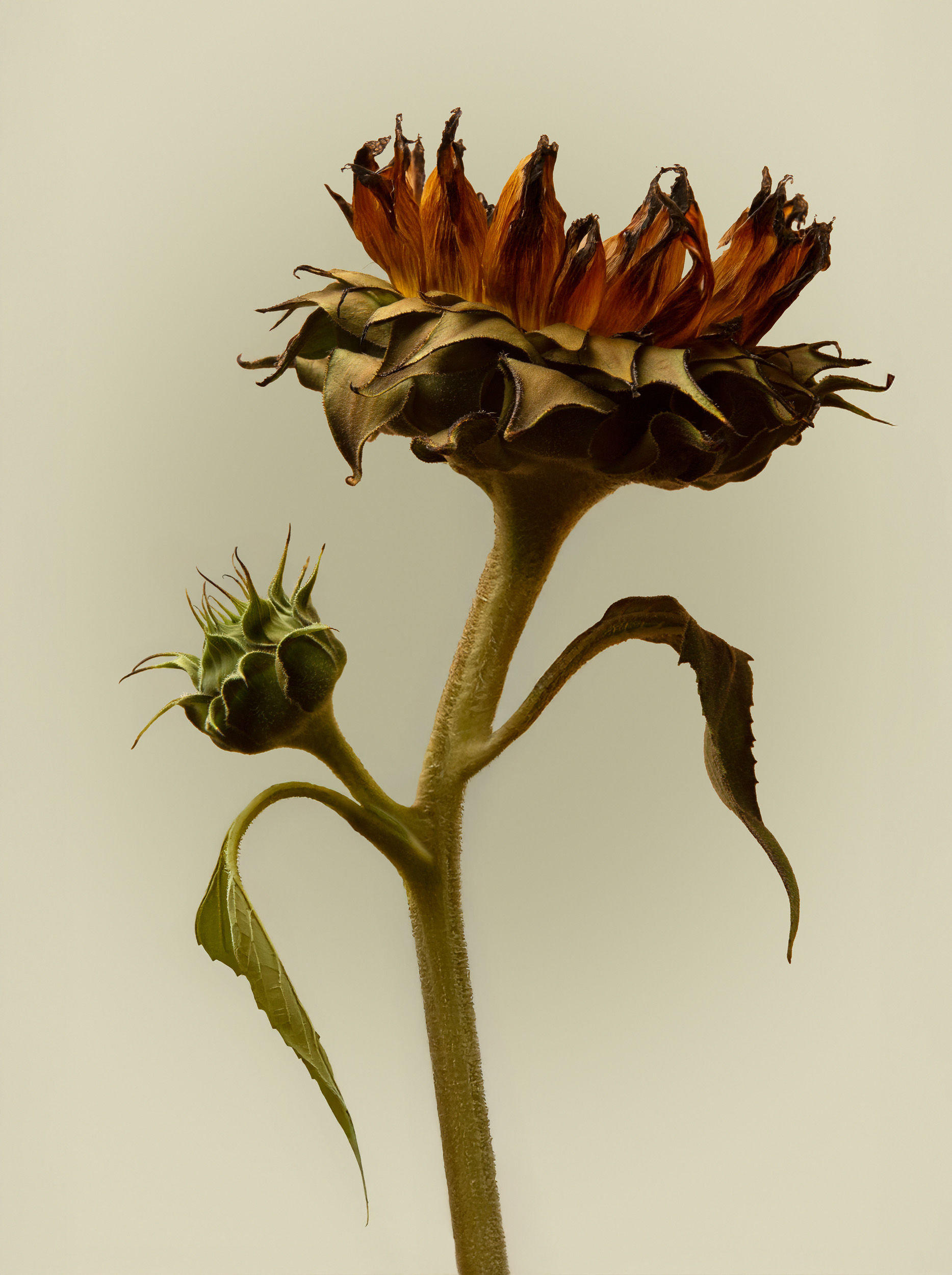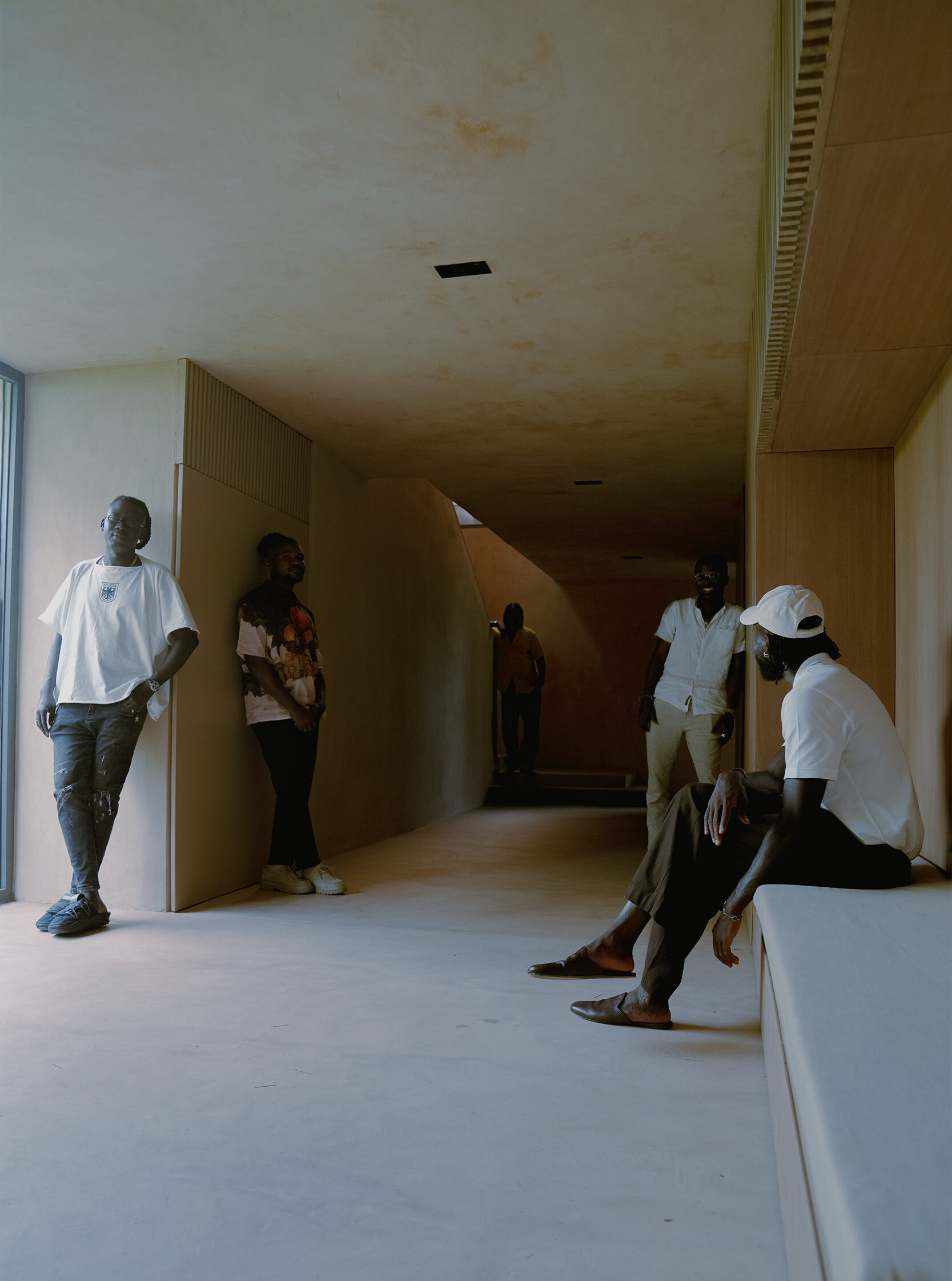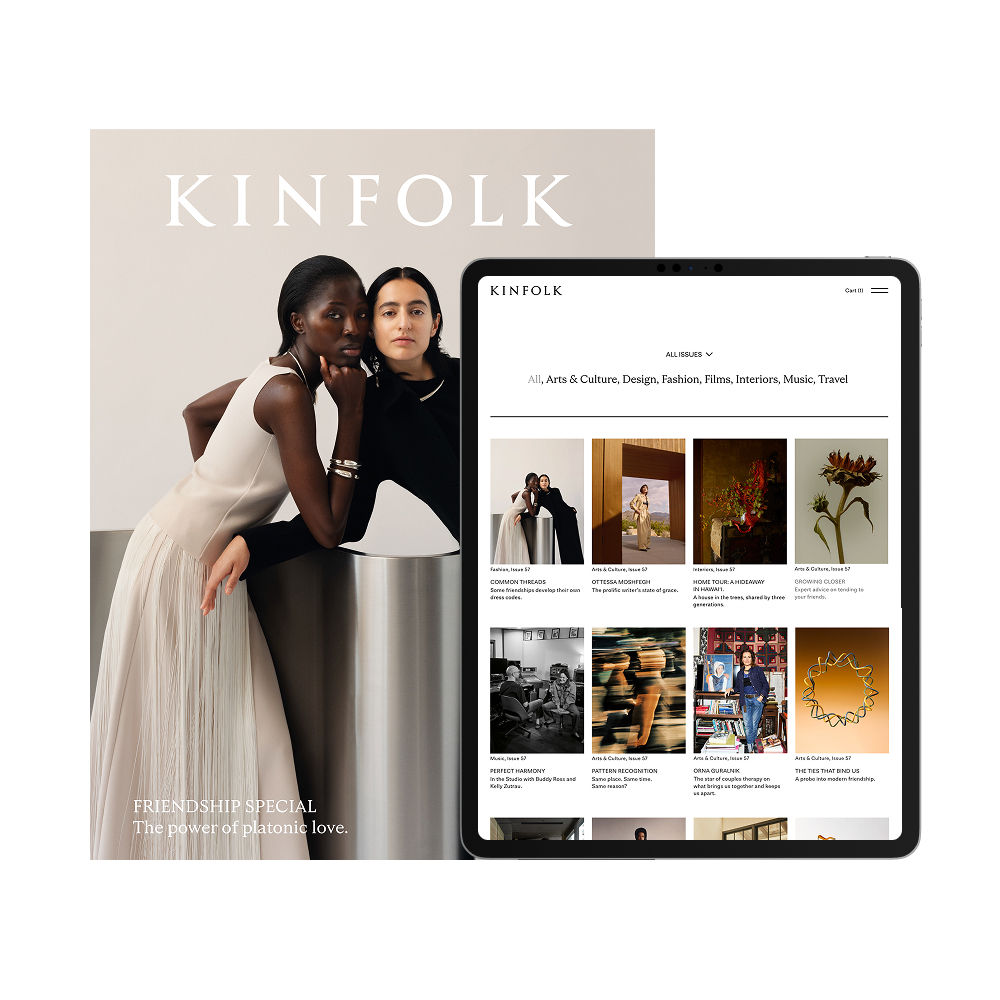
THE FAMOUS SIX
- Words Kobby Ankomah Graham
- Photos Kay Kwabia
AN AFTERNOON IN ACCRA WITH AMOAKO BOAFO AND HIS ARTIST FRIENDS.
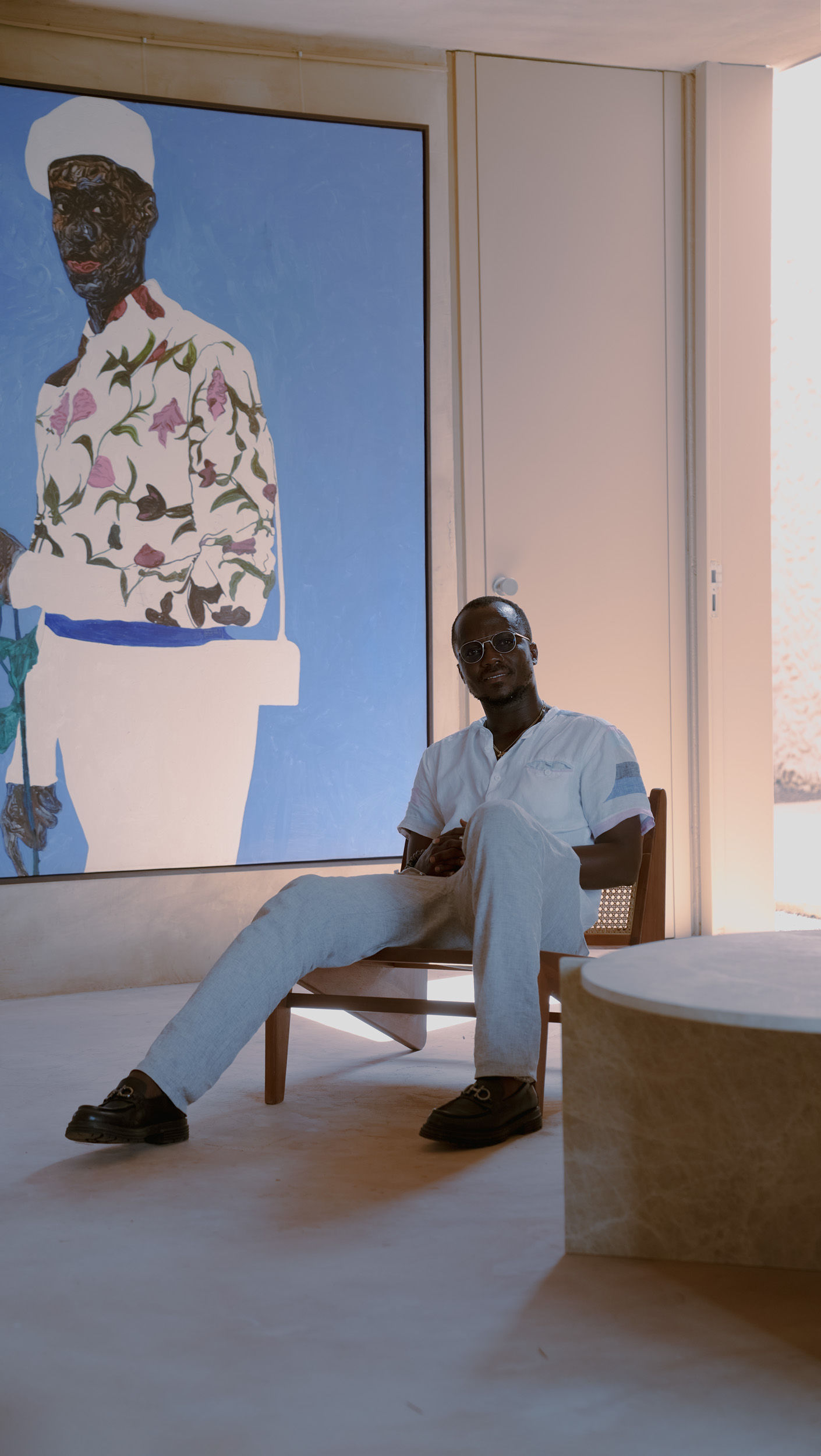
A soft drizzle lands on the surface of the swimming pool at dot.ateliers—Amoako Boafo’s writers’ and curators’ residency in Ogbojo, a quiet suburb just behind East Legon, one of Accra’s wealthier enclaves. In contrast to its glossy neighbor, Ogbojo is modest and residential: a tapestry of tarred streets, dusty roads and potential, much like Accra proper.
Designed by DeRoché Strohmayer, the residency is a companion to the first dot.ateliers, the contemporary art space and residency that British Ghanaian architect Sir David Adjaye designed for Boafo in Accra in 2022. It feels less like a retreat: Built around a central courtyard, its architecture blurs the line between indoor and outdoor living. Exposed concrete and breezy verandas frame an inviting pool. Some of the rooms open directly into sunlight and greenery. Inside, the walls are blank but for a number of striking artworks by Boafo—large scale portraits realized in his distinctive tactile style, a combination of intricate brushwork and expressive finger-painting.
Today, Boafo is hosting: five men—all artists—gathered loosely around a laptop in a circle by the pool. They trickle in, easing into seats with laughter and gentle teasing. The mood is lively, the pace unhurried. Much of the conversation is in Ga, the city’s local language, which I do not understand. But it is also laced with Pidgin, Twi and English, which I do. Ghana is a multilingual country; few people speak only one language. Every so often, a joke lands in Ga. I may not catch the words, but the laughter tells me everything I need to know. This is no formal meeting. It is a friendship circle shaped by two decades of making, growing and pushing through.
The artists introduce themselves: David Doku Borlarbi, Eric Adjei Tawiah, Stephen Allotey and Kwesi Botchway. Boafo—perhaps the most globally recognized of the group—arrives last, walking into the space with a wide grin. “My people!” he exclaims. He comes bearing food and drink: stick kebabs and a bottle of bitters. He is met with a chorus of greetings. Absent is Otis Kwame Kye Quaicoe, who joins via Zoom from Portland, Oregon. His image fills the screen of the laptop, placed carefully on one of the chairs. “I knew Amoako would call on me first,” he laughs, after introductions begin. And he’s right: There is a rhythm to the way these friends fall into step with each other.
They met in 2004, as students at the Ghanatta College of Art and Design in Accra—all except for Botchway, the youngest, who says he “found them later.” When I accidentally say they have known each other since 2014 instead of 2004, they protest. “Twenty-one years!” they say, almost in unison. Then comes a round of quiet wows, as though they are only just registering the weight of that time.
Ghanatta is more than just a footnote in their biographies. It is the soil from which everything else grew. I ask them to describe themselves as a group and they all speak at once. “Right from the beginning, there was a goal,” says one. “Determination,” says another. “Passion.” “Grounded,” someone adds. “Fire,” says Allotey, who manages Boafo’s residency and is affectionately known in the group as “Atofotse” or “Okanta the First.” His nickname provokes more laughter. Boafo has one too—“King with a Q”: an inside joke they all laugh at.
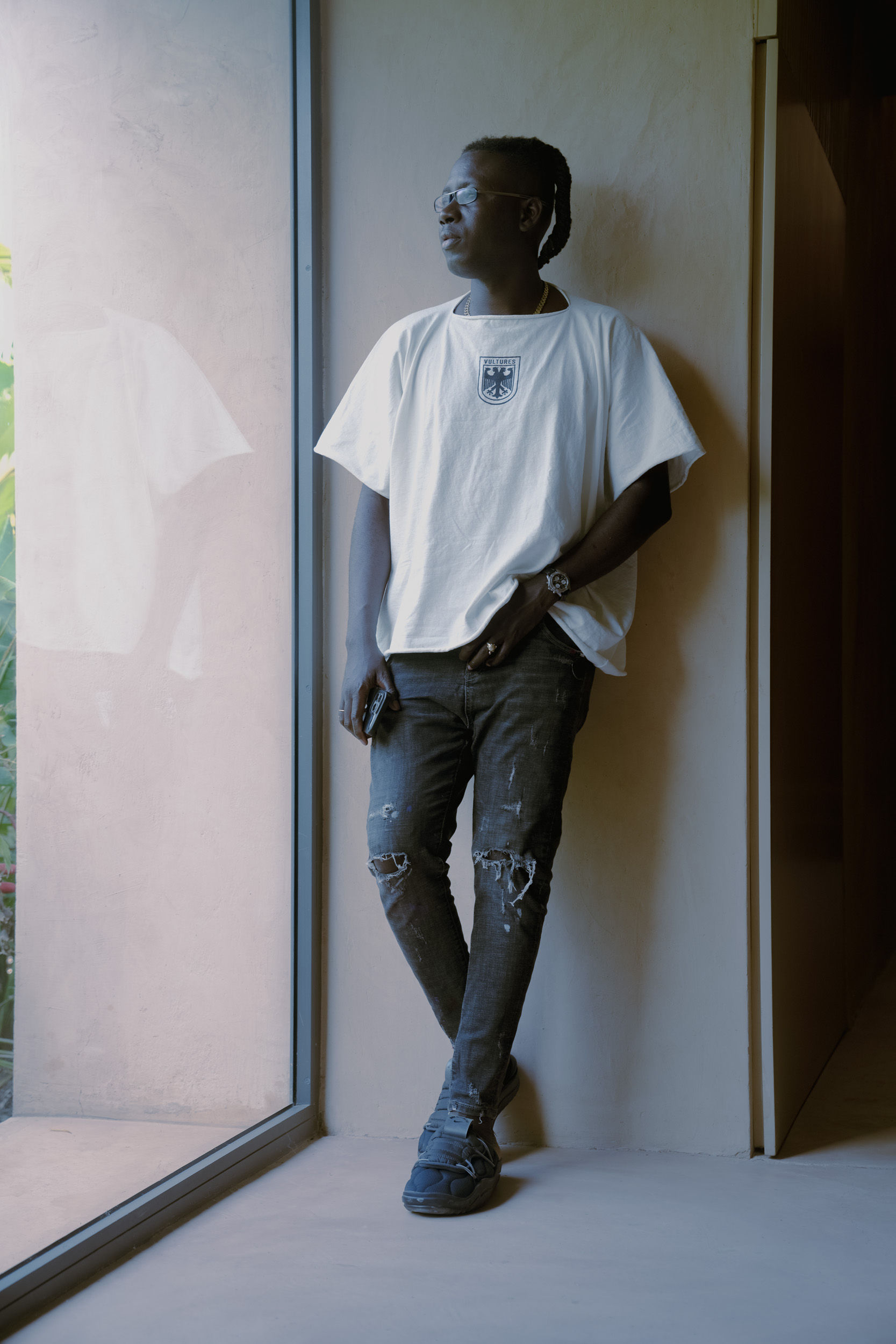
“It’s a cross-creative community. We motivate each other to work.”

Left to right: Amoako Boafo, Eric Adjei Tawiah, Kwesi Botchway, David Doku Borlarbi, Stephen Allotey.
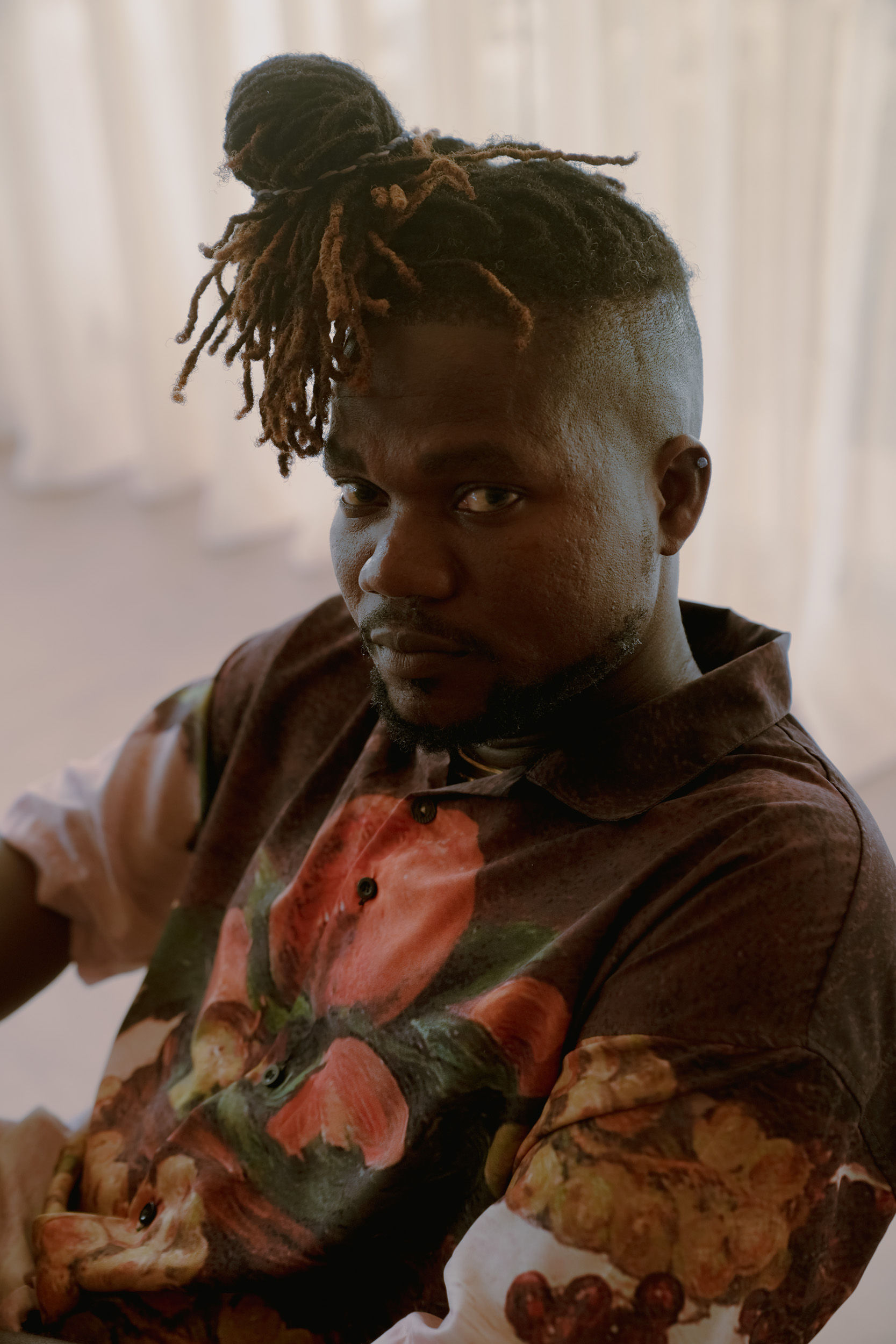
I ask them to share another inside joke that no one else will understand. “The beans seller,” Boafo says. “Hot beans.” My puzzled look sets them off.
The ritual, it turns out, was about far more than food. In Ghana, black-eyed beans are a beloved staple, eaten with rice, plantain or gari (dried, desiccated cassava). But for Boafo and his cousin, the ritual was to eat everything piping hot. No cutlery. No waiting for the food to cool. “The more you suffer, the more you’re supposed to have,” he says. “If you don’t suffer, you’re not supposed to have it.”
“It was a lesson,” says Allotey. “In disguise,” Tawiah adds. The others nod. It was about endurance. About reward. And it became their thing.
It is a busy time for the group. As well as a shared exhibition in July, Quaicoe has twin openings coming up in Portland and in Accra. Tawiah and Borlabi plan on practicing quietly in their studios after the group show. Allotey is open to future collaborations, while Botchway says he has an upcoming solo exhibition in LA in July. The others shower him with praise for the fact that he will be “so international.”
With their increasingly busy schedules, who holds the group together? Boafo pauses. “At the moment, it would be me,” he says. “But previously? It would be between Otis and Atofotse.”
“Stephen keeps us together more,” interjects Tawiah. Boafo nods. “Atofotse is a family man,” he says with obvious affection. “Kwame has a different energy. When Kwame is here, the party is not dull. But when Atofotse is here?” He switches into Twi for emphasis. “The party is not dull, koraa.” The phrase cracks them all up. The joy is easy and infectious. It feels lived-in.
When I ask which one of them is most likely to call out nonsense, Boafo doesn’t hesitate: “Atofotse.” The response is immediate and unanimous. Laughter again. “Should we not get points for this?” he grins, feigning pride. “Because the way I’m on point….” The mood is light, and I ask if they have ever fallen out. “Oh, it happens,” says Tawiah. “There’s always differences, even in groups. We argue. It’s normal.”
Boafo elaborates. “We all have different characters,” he says. “We all want to show those characters. It means one might want to be heard more than the other… even as we’re talking right now.” The group nods.
And the fractures never last. “You put the work first,” Boafo continues. “It just happens that sometimes we don’t understand each other, but that doesn’t mean it should affect the link. We keep going. We’ll find the right time, we’ll clear it, and we’ll move on.” He speaks carefully, and later, I wonder if this is perhaps less about me being a journalist and more about the quiet responsibility of being the most visible among them.
Support is not always loud. Sometimes it lies in what remains unsaid. “Even this location,” says Tawiah, gesturing to the space, “is part of it. We all know who the center of attraction is. Where everything started.” There is no resentment in his voice: only recognition. Quaicoe adds from the laptop, “Once we go our separate ways, we support each other from wherever we are. Even here [in Portland], I am always talking about my friends back home.”
Crucially, they play a role in supporting one other creatively. Quaicoe grins: “Sometimes we criticize!” The others laugh. Tawiah nods: “It’s a cross-creative community. We motivate each other to work.”
Asked how Accra responds to their friendship, Allotey doesn’t hesitate. “They envy us,” he says, laughing. Boafo winces: “That’s a strong word.” But the others agree.
Competition is part of the group dynamic. “For a place to grow and evolve,” says Boafo, “there must be healthy competition. Once you start thinking you’ve arrived, that’s when you start going down.… You need people around you who push you.” Quaicoe calls it “silent communication.” He describes studio visits where you can feel the growth in someone’s work without words. “That’s one of the things that has helped us achieve what we are already achieving. And there’s more to come.”
After the group show, Boafo says he is planning to bring his exhibitions home to Ghana. “In August next year, I want my solo shows to end here; to display some of my works in Accra. Most of the characters I paint live here, and I want people to experience them before they go to their respective homes.”
And, apart from painting, he has other projects as well: “I have an interest in architecture. I have someone amazing I am working with and want to put more energy into creating spaces that will last a bit longer than me.” He also wants to establish a tennis academy and one for soccer—two sports he loves deeply. And even though he’s not a big fan of “restaurant shit,” he knows people whose tastes and energies he trusts, and wants to build something with them.
Has their increasing visibility in the global art market affected their dynamic? Quaicoe is thoughtful. “We try to stay connected even when we become busy. Sometimes we go quiet. But we still check in. We don’t totally fall apart.”
In the end, that might be the quiet miracle of this group. Their bond seems to have held in a world where ambition often isolates and fame can distort. Twenty-one years on, they still circle back to each other, even as their paths diverge and converge in ways none of them could have predicted at Ghanatta.
The kebabs have been eaten. The bottle of bitters is almost empty. The rain has stopped. The sun emerges gently over the courtyard, making the pool glimmer. There is more laughter, and another shared joke in Ga that I don’t understand. But the feeling is unmistakable: warm, lasting and earned. The light moves fast in Accra this afternoon. But here, in this quiet corner of Ogbojo, something endures.
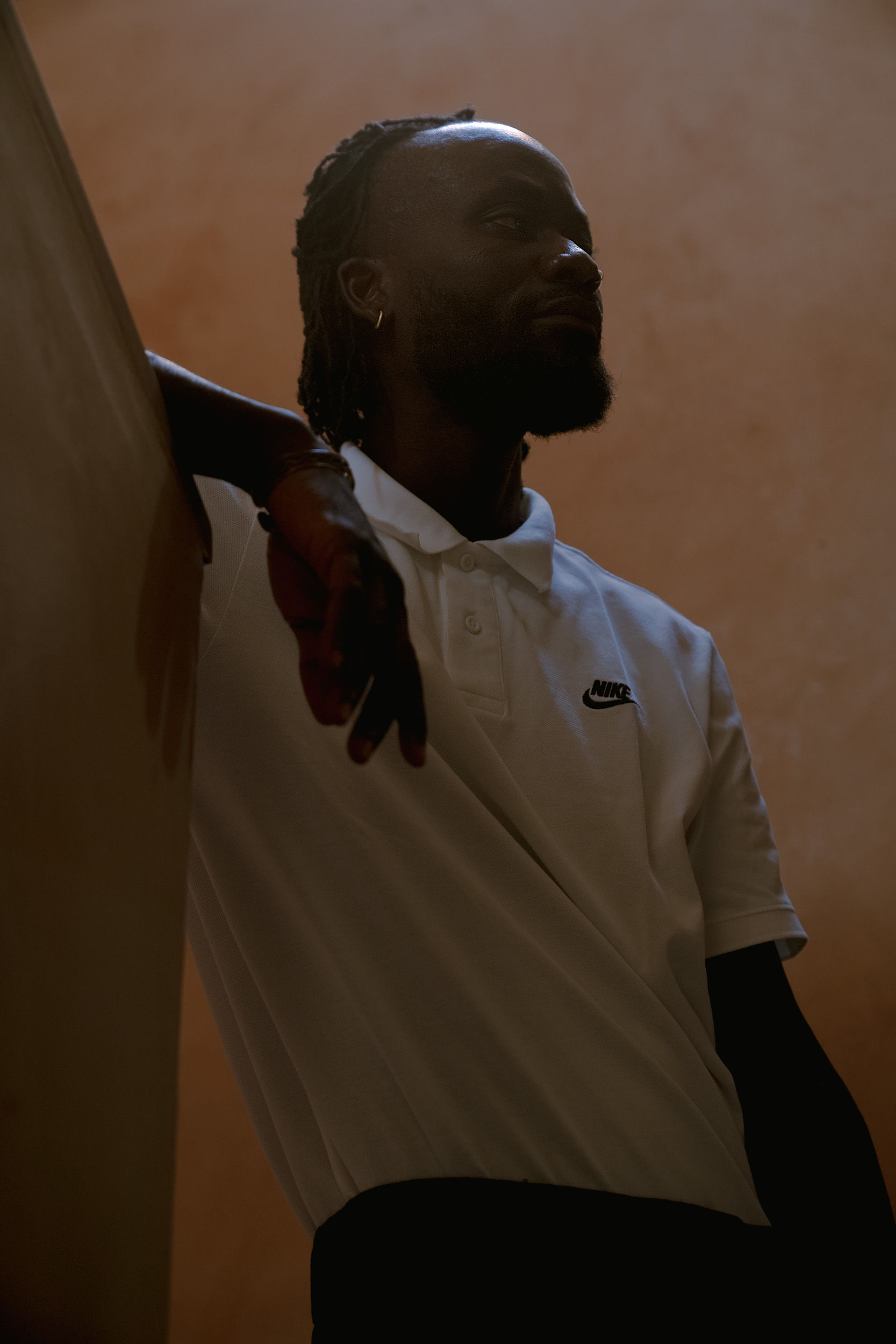
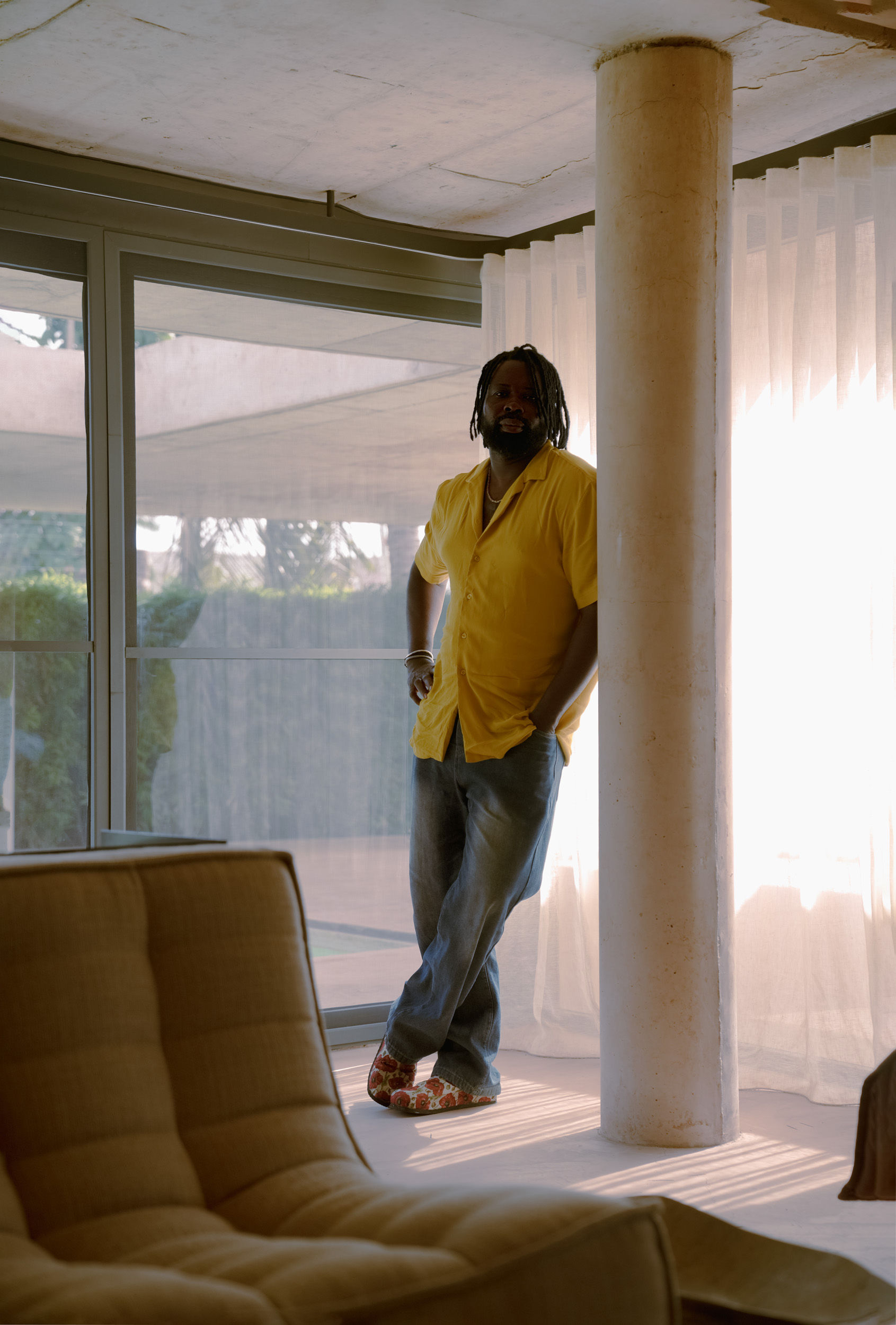
“Sometimes we go quiet. But we still check in. We don’t totally fall apart.”
